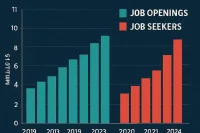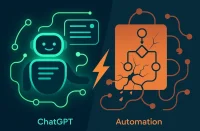Mississippi education reform represents a revolutionary transformation that has achieved what many considered impossible – turning one of America’s lowest-performing education systems into a national success story. The “Mississippi Miracle,” as coined by The New York Times, demonstrates how conservative reforms and back-to-basics approaches can dramatically improve student outcomes and economic prosperity.
The state’s remarkable turnaround has seen fourth-grade reading scores improve from 49th in the country to 9th, while fourth-grade math scores jumped from 50th to 16th nationally. This dramatic improvement has been accompanied by record-low unemployment rates and unprecedented job growth, proving that educational excellence drives economic success.
What Makes Mississippi Education Reform Different from Other State Initiatives
Mississippi education reform distinguishes itself from typical state education initiatives through its focus on fundamental principles rather than complex bureaucratic solutions. Unlike other states that have implemented expensive programs with mixed results, Mississippi took a back-to-basics approach that emphasized proven teaching methods and accountability.
The reform strategy was built on three simple pillars: passing good public policy legislation, having effective implementation through the State Board of Education and Superintendent Dr. Carey Wright, and ensuring teachers and students executed the plan with fidelity. This straightforward approach avoided the complexity that often derails education reform efforts.
The reforms specifically targeted the most vulnerable student populations, with African American fourth-graders improving from 45th to 3rd in reading compared to their peers nationally, while Hispanic students achieved the number one ranking in fourth-grade reading and number two in math.
The Back-to-Basics Approach to Reading Instruction
Mississippi education reform’s cornerstone was a return to phonics-based reading instruction, a fundamental teaching method that had been largely abandoned in favor of more experimental approaches. This decision proved to be the foundation of the state’s success, as strong reading skills are essential for all other academic achievement.
The phonics-based approach ensures that students develop the foundational skills necessary for reading comprehension and vocabulary development. By focusing on the building blocks of reading rather than relying on whole-language methods, Mississippi students developed stronger literacy skills that translated to improved performance across all subjects.
The state’s commitment to evidence-based reading instruction demonstrated that sometimes the most effective solutions are the simplest ones, requiring courage to implement despite resistance from the education establishment.
Building Literacy, Building Futures
Mississippi’s return to phonics-based instruction shows that strong foundations drive lifelong success. Employers in education can lead the way by hiring teachers, curriculum specialists, and literacy coaches dedicated to evidence-based methods. Post your job on WhatJobs today and connect with educators ready to transform literacy outcomes for the next generation.
Post a Job Free for 30 Days →The Third-Grade Reading Gate Policy
Mississippi education reform implemented a crucial accountability measure known as the third-grade reading gate, which prevents students from advancing to fourth grade unless they can pass a reading test. This policy ensures that students have mastered essential reading skills before moving on to more complex academic content.
The reading gate policy addresses the fundamental problem of social promotion, where students advance through grades without mastering necessary skills. By holding students accountable for reading proficiency, Mississippi ensured that every student entering fourth grade was prepared for the academic challenges ahead.
This policy has been particularly effective for minority students, who have shown the most dramatic improvements in reading scores. The accountability measure ensures that all students, regardless of background, receive the support they need to succeed academically.
Accountability and Results-Driven Education
Mississippi education reform emphasized accountability at every level, from individual students to teachers and administrators. The state implemented clear performance standards and held everyone responsible for achieving measurable results, creating a culture of excellence throughout the education system.
The accountability measures included regular testing, performance tracking, and consequences for failing to meet standards. This results-driven approach created incentives for continuous improvement and ensured that resources were focused on strategies that actually worked.
The success of Mississippi’s accountability measures demonstrates that when educators are held responsible for student outcomes, they find innovative ways to help students succeed. The state’s dramatic improvement proves that accountability, when properly implemented, can transform educational outcomes.
The Economic Impact of Educational Excellence
Mississippi education reform has created a powerful economic multiplier effect, with improved educational outcomes driving unprecedented job growth and investment. The state now has the lowest unemployment rate in its history and more people working than at any time in its state’s history.
The connection between educational excellence and economic prosperity is clear: when students receive a quality education, they become more productive workers who attract high-quality employers. CEOs around the globe are taking notice of Mississippi’s educated workforce and choosing to invest in the state.
The state has seen almost $45 billion in new capital investments since the current governor took office, demonstrating that educational reform creates a virtuous cycle of improved outcomes, economic growth, and continued investment in human capital.
The Role of Conservative Education Policies
Mississippi education reform demonstrates the effectiveness of conservative education policies that emphasize choice, accountability, and traditional teaching methods. These policies have proven particularly effective for minority students, disproving the notion that conservative reforms only benefit certain demographic groups.
The reforms focused on empowering parents, teachers, and students rather than expanding bureaucratic control. This approach created a more responsive education system that could quickly adapt to student needs and implement effective solutions.
The success of Mississippi’s conservative reforms provides a model for other states seeking to improve their education systems without increasing spending or expanding government control.
The Future of Education Reform
Mississippi education reform provides a blueprint for other states seeking to improve their education systems. The state’s success demonstrates that dramatic improvement is possible when policymakers focus on proven methods rather than experimental approaches.
The reforms show that educational excellence is achievable through simple, focused policies that emphasize fundamentals rather than complex bureaucratic solutions. Mississippi’s success proves that with the right approach, any state can transform its education system.
The state’s continued improvement suggests that the reforms are sustainable and will continue to benefit students for years to come, creating a lasting foundation for economic prosperity and social mobility.
A Real-World Example: Maria’s Educational Journey
Maria Santos, a 35-year-old teacher from Jackson, exemplifies how Mississippi education reform can transform both teaching and student outcomes. After years of struggling with ineffective teaching methods and low student performance, Maria was looking for a way to help her students achieve their full potential.
“I had been teaching for years, but I was frustrated because my students weren’t making the progress I knew they were capable of,” Maria explains. “When Mississippi education reform introduced phonics-based reading instruction, I was initially skeptical, but I quickly saw the difference it made for my students.”
Maria’s journey with Mississippi education reform began when she started implementing the new phonics-based reading curriculum in her third-grade classroom. She was particularly impressed by how the structured approach helped her students, especially those who had previously struggled with reading.
“The phonics-based approach was a game-changer,” Maria says. “My students who had been struggling with reading suddenly started making progress. The Mississippi education reform gave me the tools and methods I needed to help every student succeed, regardless of their background.”
Within two years of implementing the new curriculum, Maria’s students showed dramatic improvements in reading scores, with many of her African American and Hispanic students achieving the highest scores in their peer groups. She also appreciated the accountability measures that ensured all students mastered reading before advancing to fourth grade.
“Mississippi education reform taught me that every child can succeed when given the right instruction and support,” Maria reflects. “The reforms showed me that with the right methods and high expectations, we can help all students achieve their potential and prepare them for success in life.”




